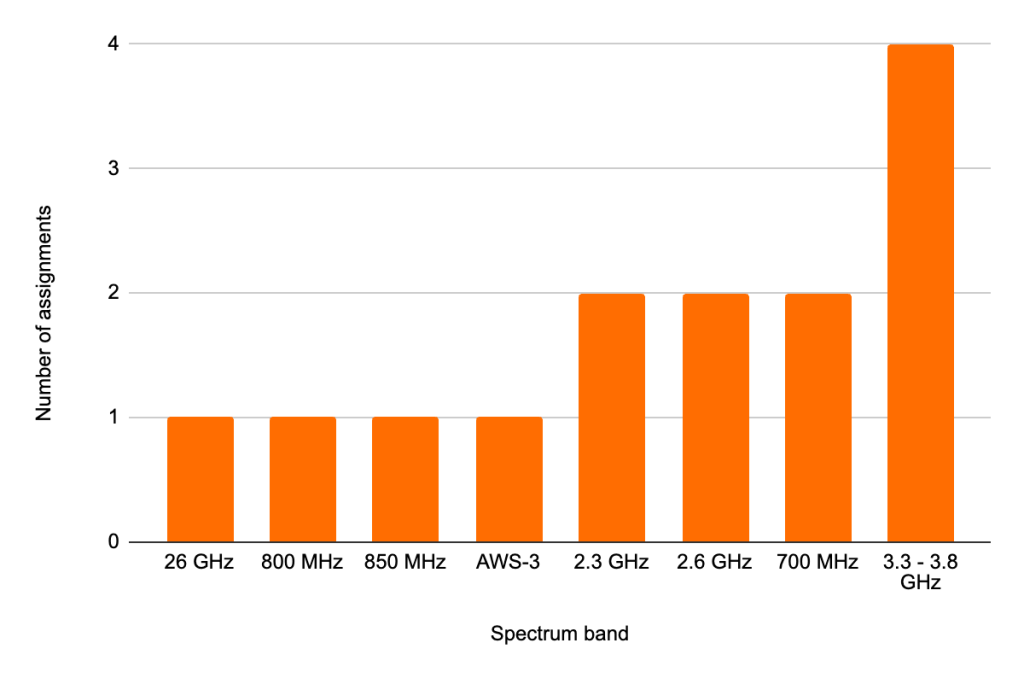Nearly half of all recent spectrum awards occurred in small territories
The latest quarterly update of the PolicyTracker spectrum database includes spectrum award results from various small jurisdictions.
Of the 12 territories that recorded spectrum auctions in the past quarter, six have a smaller population than London, which comprises around nine million inhabitants, or 13 per cent of the UK’s population.
These include French overseas island territories French Guiana, Saint-Martin and Saint Barthélemy, which all awarded the 3.3—3.8 GHz band through an auction organised by French regulator Arcep. The three territories have a combined population of just 335,000.
Auctions remained the most common award format
Meanwhile, EU member state Estonia, which has a population of 1.3 million, successfully completed its final “5G pioneer bandThe 5G pioneer bands are a set of spectrum…” auction. It sold 2400 MHz of 26 GHz band spectrum—800 MHz per operator.
In a bid to bring better mobile coverage to its population of 2.8 million, Armenia completed its 700 MHz and 800 MHz awards, while Uruguay (3.4 million) awarded the 3.3—3.8 GHz band.
Spectrum awards were also recorded in larger nations such as Guatemala, Japan, Malaysia, Nigeria, Peru and Zambia.
A wide variety of spectrum bands were awarded, with the 3.3—3.8 GHz band being the most popular (assigned in four countries). The 700 MHz, 2.3 GHz and 2.6 GHz bands were tied in second place, having all been assigned in two countries.

Auctions remained the most common award format, with eight countries choosing to award spectrum using a competitive bidding process. Three countries opted to assign spectrum directly, while one country, Nigeria, opted to renew licences in the 2.1 GHz band for existing holders.
Various other updates and improvements were also made to existing entries in the database, including the removal of South Korea’s 28 GHz licences which have now been officially revoked as the country’s mobile operators were not using the spectrum enough.
The PolicyTracker Spectrum Database tracks allocations, assignments and prices paid for spectrum. It is available in Google Sheets, as an Excel document, and on our website. It is updated quarterly and is available as part of the Spectrum Research Service.
